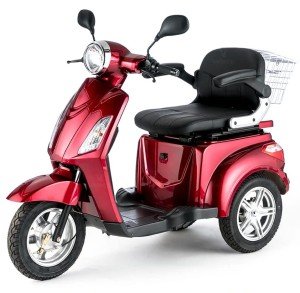
Where Are Veleco Scooters Made
Add a review FollowOverview
-
Founded Date November 29, 1923
-
Sectors Construction / Facilities
-
Posted Jobs 0
-
Viewed 19
Company Description
Guide To Velco: The Intermediate Guide Towards Velco
Velcro: A Revolutionary Fastening Solution
Introduction
Velcro, a name that has actually practically ended up being synonymous with hook-and-loop fasteners, has transformed the way we think of attaching materials. Frequently a staple in numerous industries and households, Velcro uses a simple yet reliable option to secure objects without the requirement for buckles, buttons, or zippers. This short article explores the origins, velco – Qalamscholar.com – systems, applications, and benefits of Velcro as well as addressing some regularly asked questions.
The Origins of Velcro
Velcro was developed in the late 1940s by Swiss engineer George de Mestral. After a hunting trip in the Alps, Mestral ended up being fascinated by the burrs that stayed with his dog’s fur. Upon closer assessment, he recognized they worked through a system of tiny hooks that captured anything with a loop, consisting of material and fur. Recognizing the capacity of this natural fastening mechanism, Mestral embarked on a journey to recreate it in a synthetic type. By 1955, he had actually patented his development, branding it “Velcro,” a mix of the French words “velours” (velvet) and “crochet” (hook).

How Velcro Works
Velcro consists of two different pieces: a hook side and a loop side. These 2 parts interlock when pressed together, producing a strong bond that can be easily launched with an easy pull. The performance of Velcro can be broken down into these primary parts:
| Component | Description |
|---|---|
| Hook Side | This side features tiny hooks that capture and keep loops. |
| Loop Side | This side consists of soft loops designed to accept hooks when gotten in touch with. |
Mechanism of Fastening
- Interlocking: The hooks on one side capture the loops on the other, creating a physical interlock.
- Strength: The number of hooks and loops guarantees a significant holding strength, making it appropriate for both light and heavy-duty applications.
- Ease of Use: Velcro can be disengaged and re-engaged many times without losing its efficiency, setting it apart from more traditional attachment approaches.
Applications of Velcro
Velcro has actually discovered application across a myriad of sectors, including:
-
Fashion Industry
- Sportswear
- Shoes (particularly children’s footwear)
- Accessories (belts, bags)
-
Medical Field
- Orthopedic devices
- Bandages
- Prosthetics
-
Automotive and Aerospace
- Seat covers
- Interior linings
- Safety gear
-
Family Items
- Curtains
- Rugs
- Organizers
-
Industrial Use
- Cabling
- Devices attaching
- Tools storage
Benefits of Velcro
The appeal of Velcro can be attributed to a number of advantages it provides over standard attaching techniques:
- Quick and Easy to Use: No tools are required, making it easy to use.
- Flexible: Works on different surface areas and products.
- Adjustable: Allows for easy change in size (e.g., straps).
- Durable: Holds up under recurring usage.
- Washable: Maintains its function even after cleaning.
Possible Drawbacks
While Velcro is beneficial in lots of contexts, there are some constraints to be knowledgeable about:
- Noise: The sound of Velcro being pulled apart can be loud in quiet settings.
- Use and Tear: Over time, extreme usage may result in fraying or reduced efficiency.
- Limitations with Heavy Loads: While it can hold substantial weight, it may not be ideal for extremely heavy products.
FAQs about Velcro
1. Is Velcro water resistant?
Yes, Velcro can be made from water resistant products, making it ideal for outdoor and marine applications.
2. Can Velcro be reused?
Absolutely! Velcro is designed for duplicated usage, and lots of products can be resealed and opened multiple times.
3. How do you tidy Velcro?
Cleaning Velcro is basic. You can utilize a lint roller or a soft brush to eliminate particles. For stubborn dirt, it may be rinsed gently with water.
4. Is Velcro strong enough to change zippers?
In lots of applications, yes, Velcro can efficiently change zippers, especially in instances where quick attachment and loosening are needed.
5. Exist different types of Velcro?
Yes, there are many types, including differing widths, colors, adhesive strengths, and materials created for different applications (i.e., high-temperature, outside, and so on).
Velcro has actually proven to be a flexible and innovative attaching solution that has infiltrated numerous sectors, enhancing both daily life and commercial applications. Its ability to provide a trusted and easy-to-use method of attaching makes it an enduring component of modern design. From casual garments to innovative medical applications, Velcro continues to support its credibility as a staple fastening technique for countless uses. Whether it’s for the style enthusiast or an expert in the medical field, Velcro remains an unrecognized hero on the planet of fastening innovation.
By transforming how we connect and protect products, Velcro is a testament to the power of innovative thinking and simplicity in style. As technology advances, we can only prepare for even more innovative applications for this amazing invention in the future.


